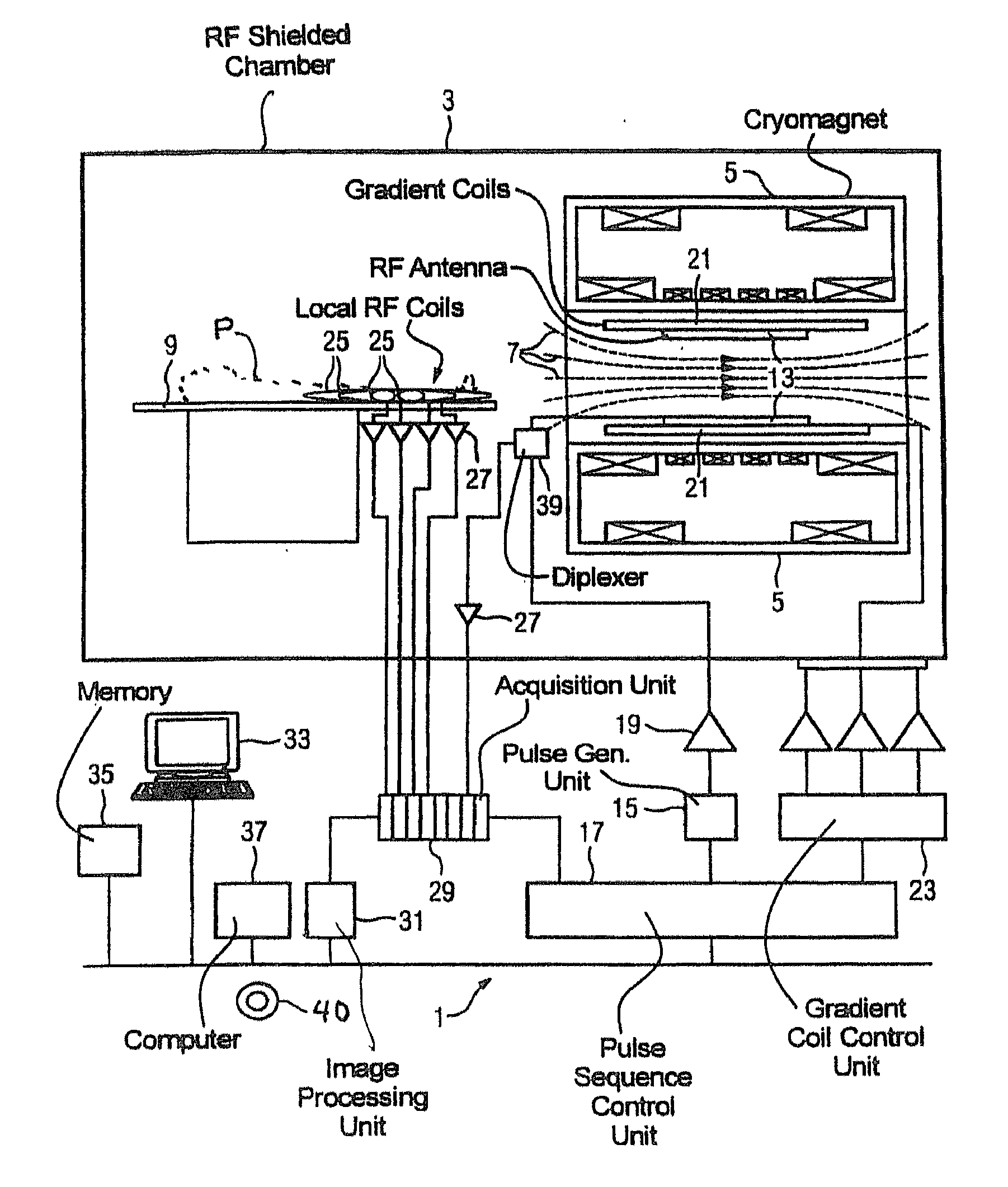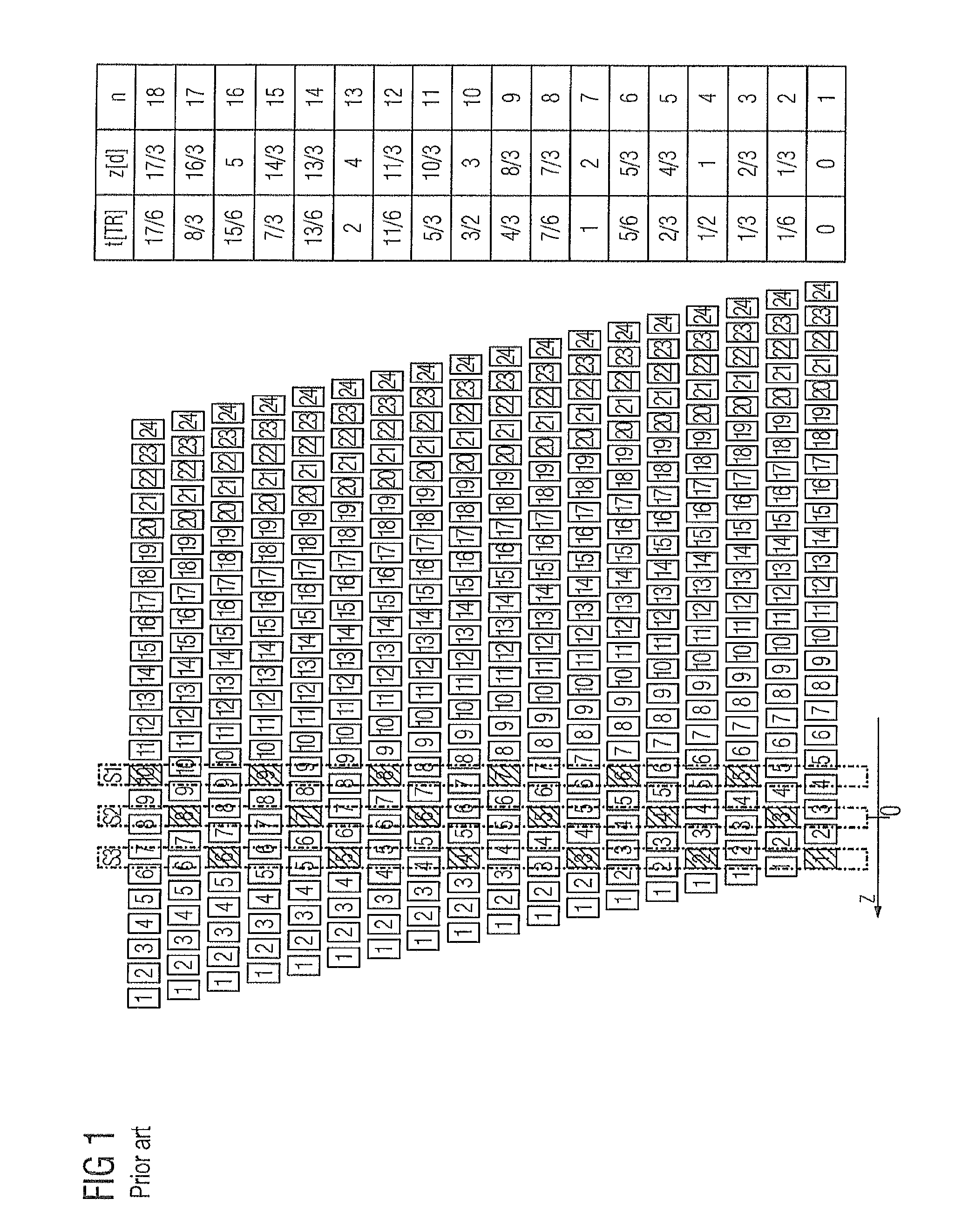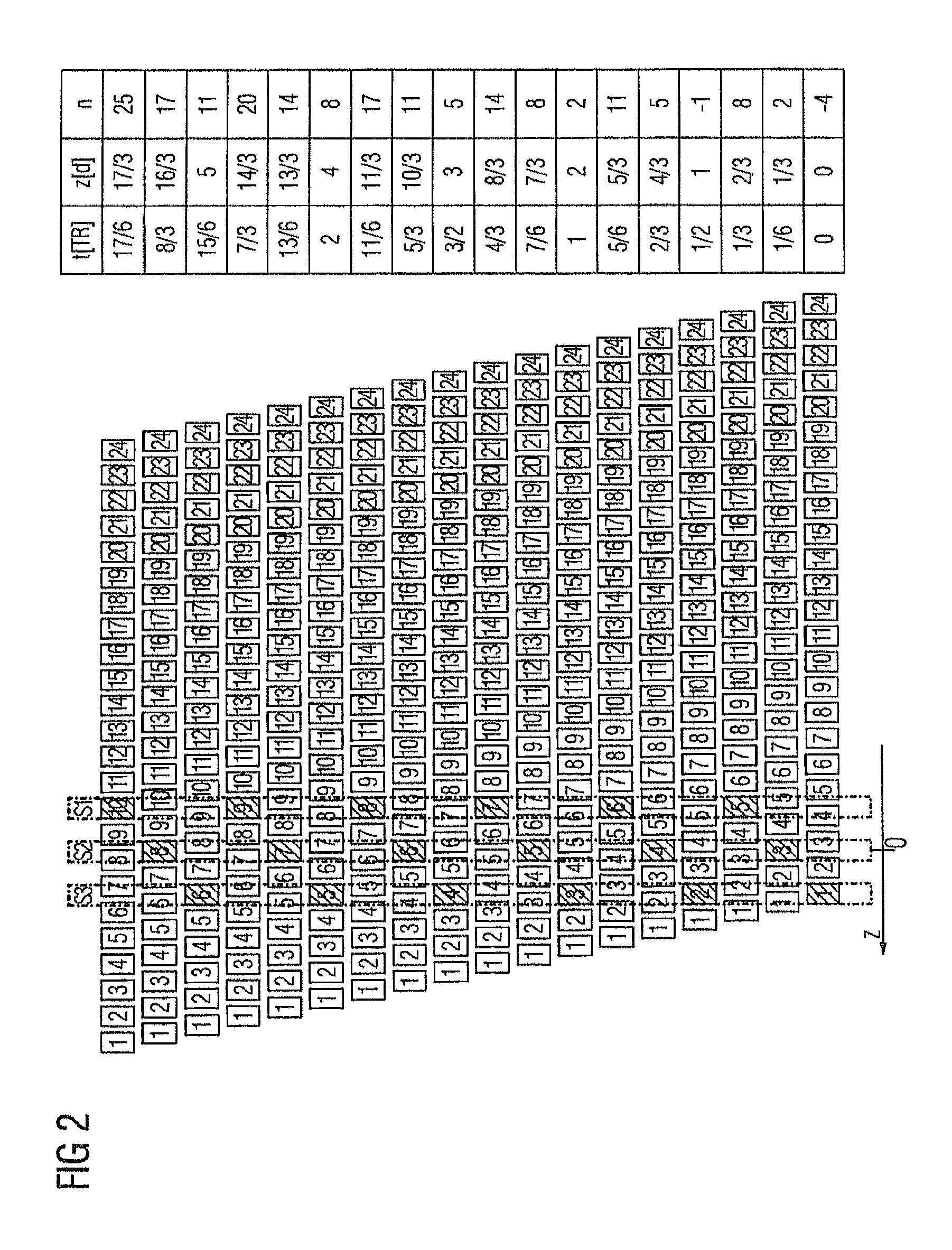Magnetic resonance system and method to adjust at least one shim current and an associated RF center frequency during an interleaved multislice mr measurement of a moving examination subject
a technology of magnetic resonance and interleaved multislice mr, which is applied in the field of magnetic resonance system and method to adjust at least one shim current and an associated rf center frequency during an interleaved multislice mr measurement of a moving examination subject, which can solve the problems of different distortions of mr image reconstructed from the acquired, failure to achieve the effect of just methods, and smearing or ghosting artifa
- Summary
- Abstract
- Description
- Claims
- Application Information
AI Technical Summary
Benefits of technology
Problems solved by technology
Method used
Image
Examples
Embodiment Construction
[0062]In the following, with the use of FIG. 1 it is shown how, given an interleaved acquisition of the slices, an adjustment of the shim current values and / or RF center frequency values as a function of the current table position according to the prior art inevitably leads to variations of the settings during the acquisition of a slice:
[0063]FIG. 1 shows the acquisition of a total of 24 slices to be examined (designated with the respective slice index 1 . . . 24) using the SMS technique as an interleaved acquisition technique. The shown slices 1 . . . 24 can correspond to anatomical slices of a patient, for example.
[0064]The horizontal z-axis points in the direction of the bed feed. The respective position of the slice stack as a function of time is plotted in the vertical direction. Significantly simplified, it is thereby assumed that three excitations are necessary for complete acquisition, for which the slices are accordingly subdivided into three segments. According to the SMS ...
PUM
 Login to View More
Login to View More Abstract
Description
Claims
Application Information
 Login to View More
Login to View More - R&D
- Intellectual Property
- Life Sciences
- Materials
- Tech Scout
- Unparalleled Data Quality
- Higher Quality Content
- 60% Fewer Hallucinations
Browse by: Latest US Patents, China's latest patents, Technical Efficacy Thesaurus, Application Domain, Technology Topic, Popular Technical Reports.
© 2025 PatSnap. All rights reserved.Legal|Privacy policy|Modern Slavery Act Transparency Statement|Sitemap|About US| Contact US: help@patsnap.com



